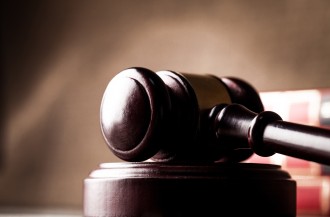
December 4, 2015
Federal Circuit Weighs in on IPR Again, and Judge Newman Regains Her Footing as Pro-Patent Crusader
The Federal Circuit issued another substantive, IPR-related opinion today in Prolitec, Inc. v. ScentAir Techs., Inc., 2015-1020 (Fed. Cir. Dec. 4, 2015) (appealing from IPR2013-00179). The Board had determined that each of the two claims at issue was unpatentable and the Federal Circuit affirmed. On appeal, Patent Owner made five challenges to the PTAB’s decision in the underlying IPR – three claim construction arguments, a related argument against anticipation, and an argument directed to its Motion to Amend in the IPR. It is worth discussing here one of the claim construction arguments, the Federal Circuit’s treatment of the Motion to Amend, and a broad-based and strong dissenting opinion filed by Judge Newman.
Regarding claim construction, Patent Owner argued that the term “mounted” was not properly construed to require a permanent joining of two parts. In support, Patent Owner pointed out that the purpose of the invention was to provide a disposable cartridge for one-time use and that each embodiment in the patent required a permanent means of bonding. The Federal Circuit disagreed. As to the purpose of the invention argument, the Court cited to broad language from the specification, that taught that “it may be desirable that the cartridge is configured to be used only one time prior to being discarded.” Op. at 5. The Court specifically noted that “[t]he problem for [Patent Owner] is that the use of ‘may’ signifies that the inventors did not intend to limit the patent as [Patent Owner’s] expert opined.” Id. at 5-6. As to the fact that each embodiment required permanent bonding, the Court pointed to more permissive language which taught that the two parts “may be jointed to each other by heat or ultrasonic welding spin welding, or by use of an adhesive.” Id. at 6 (emphasis in original).
In short, this is another example of a situation where the blind pursuit of breadth in the drafting of the patent specification hurt a Patent Owner by requiring that its patent claim(s) be construed broader than what was likely necessary to cover the commercial embodiment of the invention. The prior art seemed to show non-permanent joining of the key parts and, as such, if Patent Owner intended the patent-at-issue to cover permanent joining, it should have made that point of novelty clear in the specification and/or the patent claims.
Regarding the Motion to Amend, Patent Owner had attempted to substitute “permanently joined” into the subject claims, substituting its above-referenced claim construction for the claim element. Petitioner opposed, pointing to a reference in the prior art (cited in the original examination of the patent) that taught permanent joining. Patent Owner did not dispute that the subject prior art reference disclosed that limitation, but argued that other claim limitations were not found in the reference. The Board denied the Motion to Amend, finding that Patent Owner failed to demonstrate that the proposed claim was patentable. On appeal, Patent Owner made two arguments that came up short. The first argument was that it was not required to prove patentability over prior art references cited in the original file history because they were not of record in the IPR. This was an issue that was left open by the Federal Circuit in Microsoft v. Proxyconn, 789 F.3d 1292 (Fed. Cir. 2015). In that case, the Court had indicated that it was not deciding on the reasonableness of the Board’s jurisprudence regarding the scope of the requirement that Patent Owner show patentability over all “prior art of record” (which, at the time, arguably required a showing of patentability over the entire universe of uncited prior art). Op. at 14. Subsequent to the Federal Circuit’s decision in Proxyconn, the PTAB narrowed its guidance on what constituted “prior art of record” to include material contained in the prosecution history of the patent-at-issue. The Federal Circuit agreed with the Board’s approach in this regard, finding that the Patent Owner’s burden to show patentability over the art from the original prosecution history “is not in conflict with any statute or regulation. Moreover, it is not unreasonable to require patentee to meet this burden.” Id. As such, the Board’s denial of the Motion to Amend was affirmed.
Lastly, Judge Newman seemed to return to her pro-Patent Owner role, after signing onto the decidedly pro-Petitioner decision in Belden v. Berk-Tek, by filing a broad and strong dissent. Specifically, Judge Newman disagreed with the majority’s decision in five ways. First, she argued that the PTAB improperly refused entry of the amendment-at-issue, given that Patent Owner had complied with all the statutory and regulatory requirements. Judge Newman’s view is that the proposed amendment resolved the key dispute in the proceeding about claim breadth and, as such, “refusal to enter the amendment is contrary to both the purpose and the text of the America Invents Act.” Dissenting Op. at 3. Second, Judge Newman disagreed with the majority regarding the burden of proof for amended claims. It was not proper, per the dissenting opinion, for the Board and majority to shift the burden for amended claims to Patent Owner. Instead, the AIA places the burden of proof, throughout the proceeding – for amended and unamended claims – on Petitioner. Third, Judge Newman argued that it is the Federal Circuit’s duty to assure that the preponderance of the evidence standard is met in PTAB proceedings. As such, it is erroneous to apply the highly-deferential substantial evidence standard to AIA post-grant appeals. Fourth, Judge Newman criticized the majority opinion for not remanding the case to the Board given that the PTAB changed its view of the scope of “prior art of record” during the pendency of the case.
Lastly, Judge Newman took issue with the majority’s affirmance of the anticipation finding in view of the fact that the anticipatory reference was Patent Owner’s prior incarnation of the subject device. Per Judge Newman: “A finding of anticipation requires that the same invention was previously known and described, not that a claim can be construed so broadly and incorrectly as to embrace a prior art device.” Id. at 11.
Judge Newman is back to her old self, but another Patent Owner has found its patent rights in rubble.


































